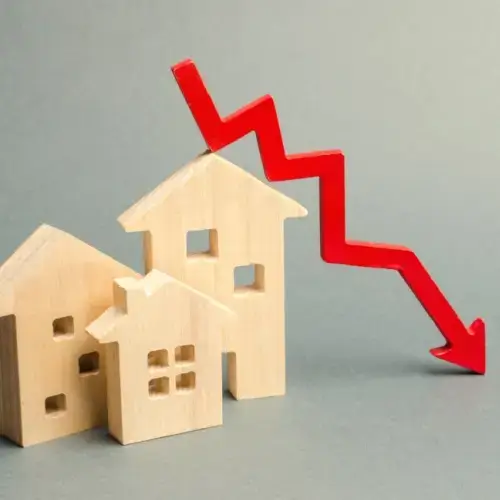Home / Home Loans / A guide to buying off th…




Key takeaways
- Buying real estate ‘off the plan’ means signing up to buy a property after it’s been designed, but before it’s been built.
- Off the plan sales work differently to regular real estate transactions, and can be both more complex and more time-consuming to complete.
- Buying off the plan comes with its own pros and cons, which you’ll want to weigh up for yourself before committing to anything.
Expert tips for buying off the plan
Our home loans expert, Stephen Zeller, has some tips for those looking at buying a new property off the plan.

Get home loan pre-approval in place
The process of buying off the plan is more complicated than the regular home-buying process, so you’ll want to help yourself streamline it as much as possible. One of the ways in which you can do this is getting a home loan pre-approval in place for yourself, making it easier to navigate the process of buying off the plan.
Do your due diligence
Committing to buying a property ‘sight unseen’ before it’s been built is inherently more risky than buying an existing property you’ve inspected beforehand. That being said, there are some steps you can take to reduce the associated risk here; these include thoroughly reading the contract of sale, researching the developer in question, and potentially seeking financial or legal advice from a conveyancer or solicitor.
Compare your options!
If you need a home loan to finance the purchase of an off the plan property, make comparison the first step in your home loan journey! Our online home loan comparison tool lets you compare a range of home loans, to try and find one that might be appropriate for you – and if you do find a loan you’d like to apply for with us, we can help you with that too!
Buying off the plan explained
What is buying off the plan?

Buying off the plan means buying a new home or investment property after it’s been designed and planned out by the developer, but before it has actually been built. Developers may opt to sell off the plan for cashflow purposes, or because of future property market projections.
How does buying off the plan work?
If you’re buying an off the plan property, whether it’s a freestanding property, unit, apartment or townhouse, you’ll typically be buying based off of concept images and a detailed floor plan. Once you’ve decided on the property you want, you’ll need to pay an initial deposit to ‘secure’ it.
Typically, from that point construction will begin, and once it’s complete you’ll be required to pay the remaining portion of the purchase price before taking ownership of the property and either moving in or renting it out as an investment property.
What does the process of buying off the plan look like?
Researching and selecting

This is the ‘shopping around’ stage, during which you’ll be examining different proposed developments and building plans to potentially try and find an off the plan property you’d like to buy. You may also want to consider applying for home loan pre-approval during this stage of the process.
Deposit payment
Once you’ve found the off the plan property you want to buy, it’s time to commit! This will typically involve signing a contract of sale with the developer, which will commit you to buying the property once the construction phase is complete.
You’ll also be required to offer up a cash deposit at this point, but until the property is completed and ready for purchase, your deposit will typically be held in a trust account by your solicitor or conveyancer.
Construction
During this phase of the process, you’ll typically be going about your normal business while your future property is built. You may receive updates on the construction process from the developer during this phase, but you generally won’t be required to do anything.
Final inspection and settlement
Once construction is complete, you’ll be invited to inspect your new property and check that the finished product has the details you asked for, making sure that nothing is incomplete or incorrectly finished. At this point you’ll pay the remainder of the purchase price and begin making your home loan repayments, much like the regular home loan settlement process.
What are the benefits of buying off the plan?
Early bird discounts
One of the more common off the plan incentives you’ll see are early bird discounts. Developers offer these to buyers to ‘pre-sell’ as much of their housing stock as possible. You could potentially get a percentage discount on your off the plan purchase by buying sooner rather than later.
Stamp duty concessions
Depending on the state or territory you live in, you may be eligible for either a concession or potentially a full exemption on your stamp duty (also known as transfer duty). Some state and territory-based concessions are for first home buyers only, whereas others may be aimed at all property-buyers.
If you’re a first home buyer, you may want to also look into other incentives such as the First Home Owner Grant, which could net you up to $30,000 towards your home loan.
Potential capital growth
Depending on how the property market performs between the start and end of your off the plan purchasing journey, you could find that come purchase time, the value of the property has increased significantly compared against a comparable established property.
While this won’t affect the price you pay for the property, it means that, in the near future, you could potentially sell your new property for a profit or choose to hold onto it and hope its value appreciates more over the medium to long term.
Custom options
Buying off the plan will typically give you the opportunity to heavily customise your future property, including your choice of fittings, finishes and fixtures. Depending on the developer and the property in question, your range of choices may vary, but you’ll generally get some say in the finished look of the property.
What are the risks of buying off the plan?
Potential decrease in value

If market conditions are unfavourable during and in the wake of the construction process, a valuation of the finished property may reveal that it’s worth less than you’re contractually obliged to pay it, which could be problematic for a few reasons.
You could choose to try and borrow more than the property is worth, but your lender could refuse your home loan application, on the grounds that the loan couldn’t be recouped in full via selling the property.
Delays
As with any construction project, the time frame of an off the plan construction project can be subject to delays and blowouts. While this isn’t necessarily the end of the world, there are a few downsides and risks here to be aware of if you’re buying off the plan.
The first is fairly practical, and it’s that you may not have anywhere to stay if construction is delayed and therefore you can’t move into your new property on time. If your existing lease has expired or you’ve sold your former property, you could be in a spot of bother.
The second, more serious risk is that some off the plan contracts contain something called a ‘sunset clause’, which typically gives either party the right to terminate the contract of sale if settlement hasn’t occurred by a given date.
While this can benefit you as the buyer by making it easier to get out of a stalled construction project, it can also work against you. The developer could decide to cut their losses and abandon the construction project, leaving you in the lurch and potentially out of pocket.
Builder bankruptcy
If the builder handling the construction of your property goes bankrupt, the project could potentially be left in the lurch indefinitely. While the developer will typically try find a new builder to step in and finish the job, this could still entail massive delays.
This in turn could see you incur additional, and potentially significant accommodation costs if you end up needing to rent somewhere for the remaining duration of the construction period.
Changes to your financial situation
Perhaps you paid your initial cash deposit with no worries at all, but you didn’t get pre-approval in place and now you’re having issues borrowing the amount you need to finalise your off the plan purchase. This could be for a few different reasons.
Maybe that’s because interest rates have gone up, affecting your borrowing power – or maybe you’re earning less than you were when you first committed to buying the property in question. Either way, you’ll likely be in hot water if you can’t borrow the amount needed to complete your purchase!
Meet our home loans expert, Stephen Zeller
Stephen has more than 30 years of experience in the financial services industry and holds a Certificate IV in Finance and Mortgage Broking. He’s also a member of both the Australian and New Zealand Institute of Insurance and Finance (ANZIIF) and the Mortgage and Finance Association of Australia (MFAA).
Stephen leads our team of Mortgage Brokers, and reviews and contributes to Compare the Market’s banking-related content to ensure it’s as helpful and empowering as possible for our readers.

